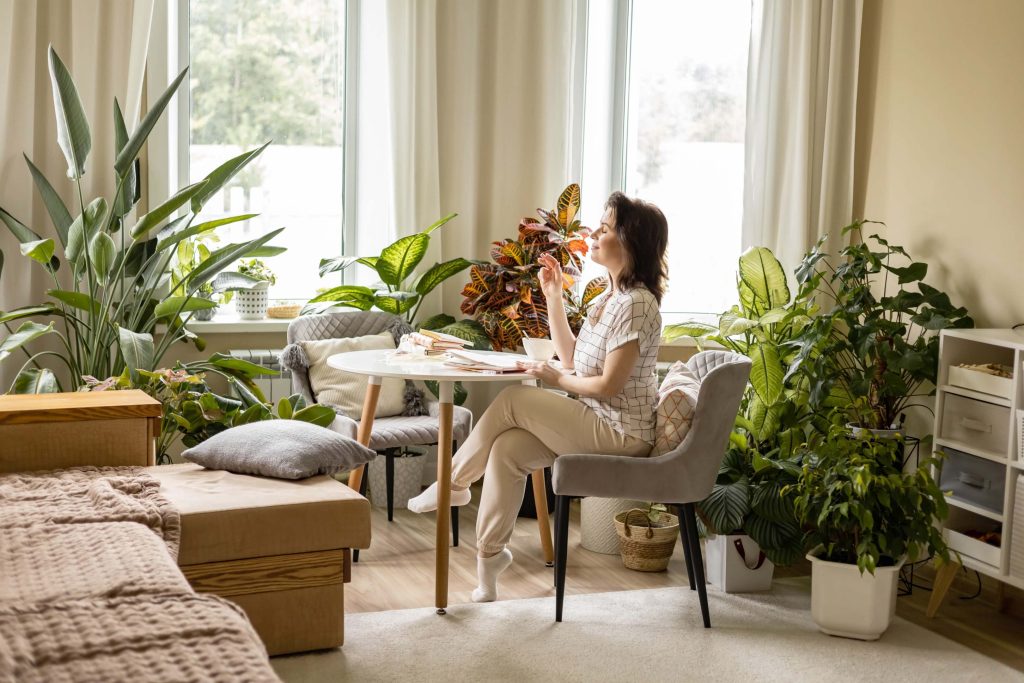Thoughtful wellness home design’s big impact on physical, mental, and heart health
A home is more than just a place to rest—it is a sanctuary that nurtures well-being and promotes a healthy lifestyle. Through thoughtful wellness home design, the layout, ambiance, and functionality of a living space can have a big impact on both physical and mental health, particularly heart health. A well-designed environment can help reduce stress, support a healthy eating pattern, and encourage habits that contribute to maintaining a healthy weight, managing blood pressure, and reducing cholesterol levels.
Since heart disease is the leading cause of death among adults worldwide, affecting about a third of the population, it’s crucial to address risk factors beyond just diet and exercise. High blood pressure, elevated cholesterol, poor dietary habits, and chronic stress significantly increase the risk of developing heart disease, leading to serious conditions like heart attack and stroke.
However, by creating a heart-conscious living environment, you can actively promote a heart-healthy lifestyle right within your own walls. Incorporating wellness design elements into your home—such as optimizing natural light, improving air quality, and creating spaces that encourage physical activity—can help manage high blood pressure, support healthy food choices like more vegetables, and foster overall health.
Simple heart-healthy tips, like organizing a stress-free kitchen that motivates you to eat fresh, nutrient-rich meals, or designing cozy corners for relaxation, can make a profound difference.
Ultimately, a heart-healthy home is more than aesthetics; it’s about making intentional healthy choices that offer lasting benefits. By prioritizing a living space that promotes well-being, you can reduce the risk of heart disease and help your family stay healthy for years to come.
Importance of Creating a Heart-Healthy Home Environment

A home that supports cardiovascular health can positively influence daily habits and long-term well-being. Every aspect, from lighting to ventilation, can affect how the body responds to stress, air quality, and physical activity.
A heart-healthy environment is vital for maintaining the balance needed to manage risk factors like high blood pressure, high cholesterol, and chronic stress. By creating a heart-conscious living space, individuals and families can promote habits that protect their hearts and enhance their quality of life.
Reducing the Risk of Developing Heart Disease
Chronic stress can lead to high blood pressure, poor sleep, and other cardiovascular risks. A relaxing home environment with calming colors, natural lighting, and cozy areas promotes mental peace and supports both heart and brain health.
Simple practices like maintaining a clutter-free space, incorporating plants, and establishing routines for quality sleep can significantly reduce stress levels.
Encourage Physical Movement
A well-planned home layout can make exercise and physical activities more accessible. Dedicated workout areas, open spaces that encourage movement, and even simple additions like yoga mats or standing desks help keep the body active.
Regular physical activity helps control weight, reduce blood pressure, and improve heart function—key factors in lowering cardiovascular risk.
Enhance Indoor Air Quality
Good ventilation, the presence of indoor plants, and natural air circulation help prevent exposure to pollutants that may contribute to heart disease. Clean air supports the body’s overall health, reduces respiratory stress, and aids in maintaining proper heart function.
Minimizing exposure to toxins, such as secondhand smoking, is also essential for protecting both adults and kids from heart-related conditions.
Support a Nutritious Lifestyle
A well-organized kitchen and dining area can encourage healthier eating habits, which are key for heart health. Having easy access to heart-friendly foods like fruits, vegetables, whole grains, and lean proteins helps promote a balanced diet. Reducing salt intake and avoiding processed foods can help control blood pressure.
Teaching kids and loved ones about the importance of healthy eating fosters lifelong habits that support cardiovascular health.
By designing a heart-conscious home, you’re not just enhancing your living environment—you’re investing in the health and happiness of yourself and your loved ones. If you have specific health concerns, consulting with a doctor can provide personalized advice to further optimize your home for heart wellness.
Home Designs for Wellness

The design and structure of a home can impact emotional well-being, sleep quality, and stress levels—all of which are crucial for heart health. Here are key design elements that contribute to a wellness-focused home:
Ambient Glow for Relaxation
Lighting plays a crucial role in setting the mood and regulating the body’s circadian rhythm. Soft, warm lighting can help reduce stress and promote relaxation, while natural lighting helps balance sleep-wake cycles.
Using dimmable lights, Himalayan salt lamps, or LED bulbs with a warm glow can create a calming environment that eases tension and lowers blood pressure.
Stylish Windows for Indoor Air Quality
Windows are not just aesthetic elements; they are essential for maintaining indoor air quality. Properly designed windows allow for better air circulation, reducing indoor pollutants that may contribute to heart problems.
Large windows that let in natural light and fresh air can improve oxygen flow, making breathing easier and improving overall well-being.
Warm Colors for Thermal Comfort
Colors have a psychological impact on emotions and physical responses. Warm tones such as soft oranges, muted yellows, and earthy browns create a cozy atmosphere that fosters relaxation.
Additionally, these colors can provide thermal comfort, making a home feel warmer and more inviting, which indirectly contributes to stress reduction and heart health.
Biophilic Design for a Healthy Eating Pattern
Biophilic design integrates nature into the home, fostering a connection with the outdoors and promoting healthier habits. Indoor plants, vertical gardens, and natural wood elements can create a serene atmosphere that reduces stress.
Moreover, having an herb garden or fresh produce within easy reach encourages home-cooked meals, which are often healthier and more heart-friendly than processed foods.
Wellness Design Tips
Creating a wellness-focused home isn’t just about style—it’s about designing spaces that support both physical and mental health, especially for your heart. Here are some simple yet effective tips to enhance heart health within your home:
1. Combining Textures for Visual Interest
Incorporating a mix of textures adds warmth and depth to your living space. Natural materials like wood, stone, and soft fabrics create a cozy, inviting environment that helps reduce stress, a key contributor to heart disease.
Balance is essential—layer rugs, throws, and cushions with smooth surfaces to avoid sensory overload, promoting relaxation and emotional well-being.
2. Scents for Home Design
Aromatherapy is a simple way to enhance your home’s atmosphere while supporting heart health. Scents like lavender, chamomile, and ylang-ylang are known to reduce blood pressure, lower anxiety, and improve mood.
Use essential oil diffusers, scented candles, or fresh plants to infuse your home with calming aromas that promote relaxation and reduce cardiovascular risk factors.
3. Creating a Heart-Healthy Home Office
A well-designed home office can improve both productivity and well-being. Prioritize natural lighting, ergonomic furniture, and good air quality by adding indoor plants.
A clutter-free, calming environment reduces mental fatigue and stress, supporting better heart health. Consider standing desks or incorporating movement into your day to encourage better circulation and overall health.
Prioritizing Prevention and Self-Care
A truly heart-healthy home goes beyond aesthetic appeal—it serves as a foundation for daily habits that support self-care and long-term preventive health.
By making intentional design choices and lifestyle adjustments, you can create an environment that promotes both physical and emotional well-being, helping to reduce the risk factors associated with heart disease.
1. Designate Stress-Relief Spaces
Chronic stress is a major contributor to high blood pressure and cardiovascular issues. Creating dedicated spaces for relaxation, such as cozy reading nooks, meditation corners, or even a small balcony garden, can significantly help manage stress levels.
Incorporate soft lighting, comfortable seating, and calming décor to foster mindfulness and emotional balance, giving your heart the chance to rest and recover.
2. Organize a Heart-Healthy Kitchen
Your kitchen plays a vital role in shaping your diet, which directly impacts heart health. Keep your space organized with easy access to heart-friendly foods like whole grains, lean proteins, fresh vegetables, and healthy fats.
Stocking up on low-salt options, reducing processed snacks, and displaying fruits on the counter can encourage healthier eating habits. Even small changes, like using smaller plates to control portion sizes, can support a healthy weight and better cholesterol levels.
3. Enhance Air Quality for Better Heart Function
Indoor air quality has a surprising impact on cardiovascular health. Poor air quality can exacerbate conditions like high blood pressure and increase the risk of heart-related issues. Invest in air purifiers to reduce pollutants and allergens.
Additionally, incorporating indoor plants such as snake plants, peace lilies, or spider plants can naturally purify the air while adding a refreshing touch to your living space.
4. Create a Sleep-Friendly Environment
Quality sleep is essential for heart health. Inadequate rest can lead to elevated blood pressure, increased stress hormones, and a higher risk of heart disease.
Design your bedroom to promote better sleep by using blackout curtains, soundproofing materials, and calming color schemes. Keep electronic devices out of the bedroom to minimize distractions and encourage a consistent sleep schedule, which is crucial for maintaining a healthy heart rhythm.
By integrating these simple yet effective changes, your home can become a sanctuary that not only looks beautiful but actively supports your heart’s well-being. Prioritizing self-care and prevention in your living space is an investment in a healthier, happier life.
Your Hearty Home with Crown Asia: A Sanctuary for Wellness and Classic Elegance

A heart-healthy home is more than just a beautifully designed space—it is a sanctuary that nurtures both physical and emotional well-being. From ambient lighting and biophilic elements to well-ventilated interiors and thoughtfully curated spaces, every design choice plays a vital role in promoting cardiovascular health, reducing stress, and supporting a balanced lifestyle.
For over two decades, Crown Asia, the premier residential arm of Vista Land, has been at the forefront of creating homes that embody this philosophy. Their globally inspired, upscale communities—strategically located within Metro Manila and Southern Luzon—are designed not just for aesthetic appeal but to foster a heart-healthy lifestyle.
With lush green spaces, abundant natural light, and well-planned layouts that encourage movement and mindfulness, every Crown Asia home becomes a haven of comfort, wellness, and sophistication.
Whether you’re investing in a spacious house and lot or a modern vertical residence, Crown Asia ensures that your home is not just a dwelling but a trophy home—a testament to your achievements and a sanctuary where your heart can truly thrive.
Live grand, live well, and embrace a life filled with elegance, tranquility, and good health with Crown Asia.


